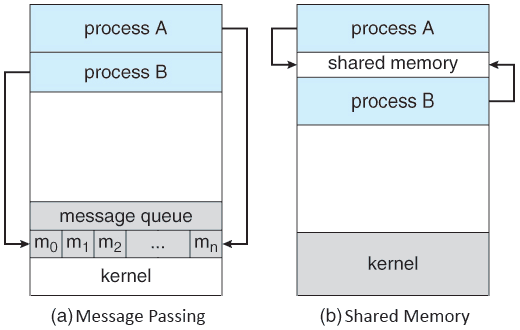Interprocess Communication (IPC) stands as a vital mechanism in the world of computing, enabling processes within a multitasking computer or across networked machines to communicate and coordinate with each other. This technology is the linchpin for efficient and effective data exchange in various software applications, particularly in complex client/server environments.
In this article, we will explore the intricacies of IPC, dissecting its methods, significance, and implementation, especially within the context of Microsoft Windows operating systems. From the basic principles to the advanced functionalities, this piece aims to provide a comprehensive understanding of IPC, catering to both software developers and technology enthusiasts keen to delve deeper into this essential aspect of modern computing.
Table of Contents:
- What is Interprocess Communication (IPC)?
- IPC Mechanisms and Models
- IPC in Microsoft Windows
- Implementing IPC in Applications
- Security Considerations in IPC
- Advanced Topics in IPC
- Case Studies: IPC in Action
- References and Further Reading

1. What is Interprocess Communication (IPC)?
Interprocess Communication (IPC) refers to the collection of programming interfaces and protocols that allow separate processes to exchange data and synchronize their actions. IPC is crucial in multitasking environments where independent processes must cooperate to perform complex tasks or share resources efficiently. It encompasses a variety of techniques, each designed to facilitate different communication needs, be it within a single computer or across a network of devices.
- Types of IPC: This includes shared memory, message passing, sockets, pipes, and remote procedure calls (RPCs), each serving specific scenarios and requirements.
- IPC in Multitasking Systems: IPC is particularly significant in operating systems that support multitasking, allowing different applications or parts of a single application to communicate asynchronously or in real-time.
2. IPC Mechanisms and Models
Overview of Various IPC Mechanisms
Interprocess Communication (IPC) encompasses a range of mechanisms, each serving specific communication needs in a software environment:
- Message Passing: This mechanism involves sending and receiving messages between processes. It is highly versatile and can be implemented in various ways, including mailboxes, message queues, and sockets.
- Shared Memory: In this model, multiple processes share a common memory space. One process writes data to the shared memory, which other processes can then read and process.
- Pipes and Named Pipes: Pipes are IPC mechanisms where the output of one process becomes the input of another. Named pipes extend this concept to allow communication between unrelated processes.
- Remote Procedure Calls (RPCs): RPCs enable a program to cause a procedure to execute in another address space, usually on another physical or virtual machine.
- Sockets: Primarily used in networked environments, sockets provide an endpoint for sending and receiving data across a network.

Comparison of Message Passing vs Shared Memory Models
- Performance: Shared memory is generally faster than message passing as it involves less overhead. However, its complexity increases with the number of processes sharing the memory.
- Ease of Use: Message passing is easier to implement and debug compared to shared memory. It provides a clear structure for communication between processes.
- Scalability: Message passing scales better in distributed systems as it doesn’t require a shared memory space, which can be a limitation in large or distributed systems.
Other IPC Mechanisms Supported on Windows Platforms
- Mailslots
- NetBIOS
- Network Dynamic Data Exchange (NetDDE)
- Distributed Component Object Model (DCOM)
3. IPC in Microsoft Windows
How Windows Supports IPC
Microsoft Windows provides comprehensive support for IPC through various built-in mechanisms and APIs:
- Named Pipes and Anonymous Pipes: Windows supports both named and anonymous pipes for process communication, particularly within local and networked environments.
- Windows Sockets (Winsock): Winsock API in Windows is used for network communication, supporting both TCP and UDP protocols.
- Mailslots: Windows uses mailslots for lightweight message passing, especially useful for broadcasting messages to multiple recipients.
Specialized Windows IPC Features and Tools
- Component Object Model (COM): COM is a Microsoft-developed mechanism for enabling interprocess communication and dynamic object creation.
- Memory-Mapped Files: This feature in Windows allows multiple processes to access the same file or a memory object, facilitating shared memory IPC.
- Distributed Component Object Model (DCOM): An extension of COM, DCOM supports communication across networked devices, crucial for distributed computing environments.
4. Implementing IPC in Applications
Practical Guide to Implementing IPC in Software Development
- Choosing the Right IPC Mechanism: The choice of IPC mechanism depends on factors like the application’s architecture, performance requirements, and the environment in which it operates.
- Implementing Message Passing: Utilize APIs for sockets or message queues to implement message passing, ensuring robust error handling and synchronization.
- Setting Up Shared Memory: When using shared memory, establish a well-defined protocol for access and synchronization to prevent issues like race conditions.
Examples and Best Practices
- Case Example: A multi-threaded web server using sockets for handling client requests and shared memory for caching frequently accessed data.
- Best Practices:
- Ensure data consistency and thread safety in shared memory implementations.
- For message passing, manage the message queue efficiently to avoid bottlenecks.
In summary, understanding and effectively implementing IPC mechanisms and models is fundamental in software development, especially in complex multitasking and distributed environments. This chapter provides the foundational knowledge and practical insights necessary to harness IPC effectively in a range of applications.
5. Security Considerations in IPC
Challenges and Solutions in Ensuring Secure IPC
In the realm of Interprocess Communication, ensuring security poses several challenges:
- Data Interception and Tampering: Since IPC often involves data transfer across different processes, there’s a risk of sensitive data being intercepted or tampered with.
- Unauthorized Access: Processes need to authenticate each other to prevent unauthorized access, especially in systems where multiple processes interact closely.
Solutions:
- Secure Channels: Implement secure communication channels for IPC, especially for message passing mechanisms like sockets and RPCs.
- Access Controls: Apply strict access control policies to shared resources, ensuring that only authorized processes can access or modify shared data.
Role of Encryption and Authentication in IPC
- Encryption: Encrypting data in transit is vital, particularly in networked environments where IPC crosses system boundaries.
- Authentication Protocols: Implementing robust authentication protocols ensures that only legitimate processes can initiate communication, enhancing overall security.
6. Advanced Topics in IPC
IPC in Distributed Systems and Microservices Architectures
- Distributed Systems: In distributed computing, IPC is crucial for enabling communication between processes running on different machines. Technologies like gRPC and RESTful APIs are commonly used.
- Microservices Architectures: IPC plays a key role in microservices, where services communicate through well-defined APIs and protocols, often using lightweight message passing or RPCs.
Future Trends and Developments in IPC Technology
- Cloud-Native IPC: As cloud computing evolves, IPC mechanisms are becoming more optimized for cloud environments, focusing on scalability and flexibility.
- IPC in IoT and Edge Computing: The rise of IoT and edge computing is driving the development of IPC mechanisms that can operate efficiently in resource-constrained environments.
7. Case Studies: IPC in Action
Real-World Examples of IPC Implementations
- Financial Services: Banks and financial institutions use IPC for high-speed transaction processing, where milliseconds matter.
- Telecommunications: Telecom systems use IPC for managing large-scale communication networks, ensuring seamless data flow across devices and systems.
Analysis of IPC Usage in Popular Software and Applications
- Operating Systems: Modern operating systems use IPC extensively for managing system processes and user applications.
- Large-Scale Web Applications: Web services like social media platforms and search engines rely on IPC for handling massive, distributed workloads.
8. References and Further Reading
- Technical Documentation:
- Microsoft Learn: Systems Services – Interprocess Communications Mechanisms.
- Books:
- “UNIX Network Programming” by W. Richard Stevens – for IPC in Unix environments.
- “Distributed Systems: Concepts and Design” by George Coulouris et al.
- Research Papers and Journals: